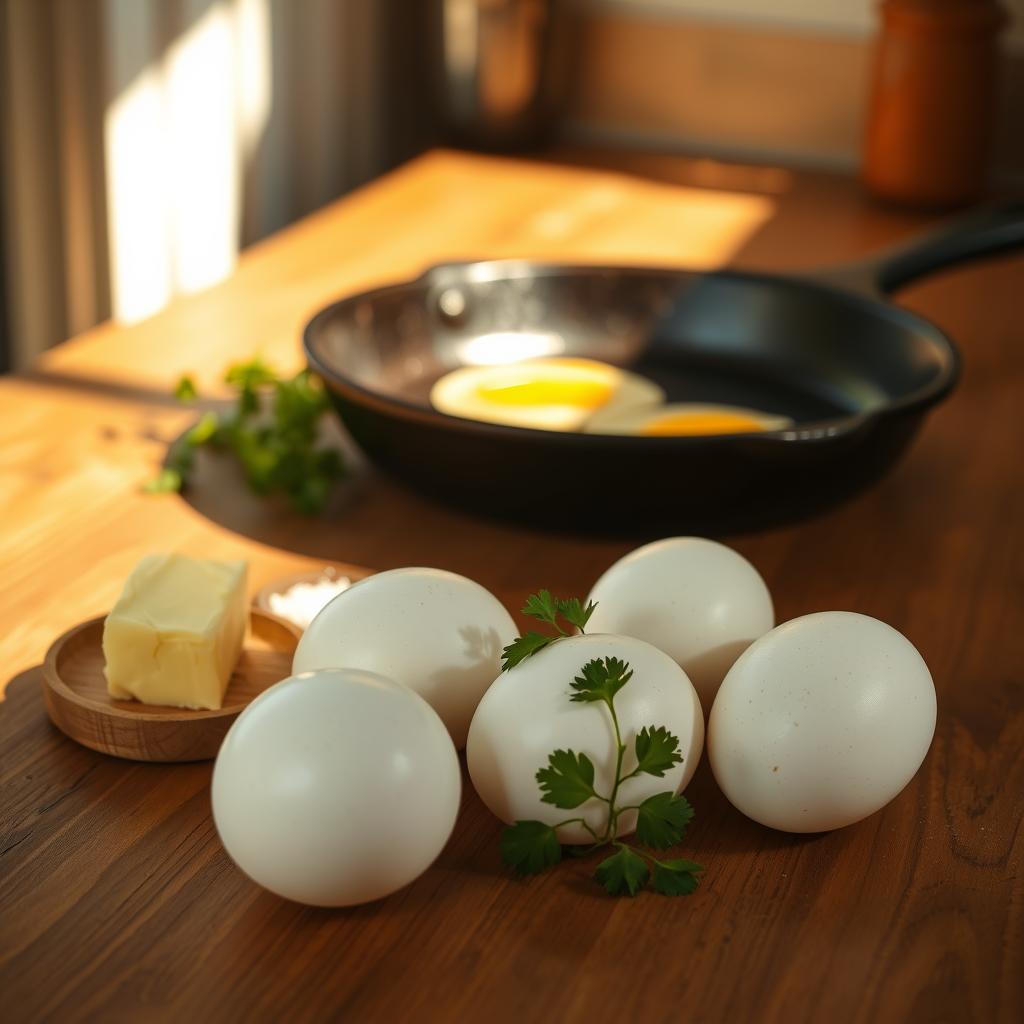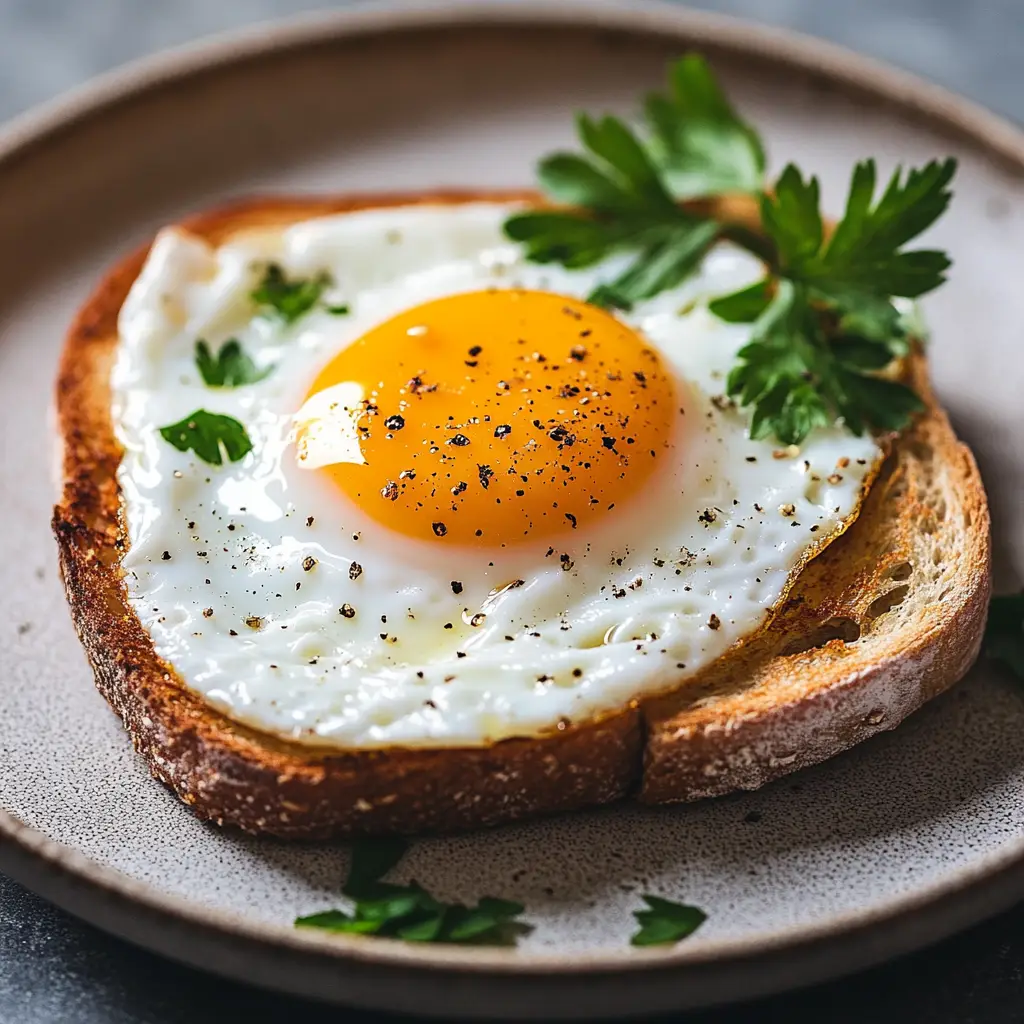Cooking over easy eggs can elevate your breakfast game, making it a delightful experience. Unlike sunny-side-up eggs, which are cooked on one side, over easy eggs are flipped to cook on both sides, resulting in fully set whites and gloriously runny yolks.
Welcome to our comprehensive guide on making perfect over-easy eggs. Here, you’ll learn the technique to achieve this breakfast classic, featuring simple, manageable steps that even novice cooks can follow. By the end of this guide, you’ll be able to make perfect over easy eggs every time, impressing your family and friends with your newfound culinary skill.
Key Takeaways
- Cooking over easy eggs involves flipping them to cook on both sides.
- The key to perfect over-easy eggs is achieving fully set whites and runny yolks.
- Our guide provides step-by-step instructions for novice cooks.
- Mastering the flip technique is crucial for making perfect eggs.
- With practice, you’ll be able to make perfect over easy eggs consistently.
What Are Over Easy Eggs?
The art of cooking the perfect over easy egg lies in achieving fully set whites and a golden, runny yolk. This delicate balance is what makes over easy eggs a beloved breakfast choice for many.
To understand what makes over easy eggs special, it’s helpful to distinguish them from other similar breakfast options. Let’s explore the differences and defining characteristics.
Over Easy vs. Sunny Side Up
Over easy eggs are often confused with sunny side up eggs, but there’s a key difference. While both styles feature a runny yolk, over easy eggs are flipped during cooking, allowing the top side to cook briefly. This subtle step sets them apart and affects the final texture.
The Perfect Over Easy Egg Defined
A perfect over-easy egg has fully set whites and a golden, runny yolk that stays intact until you cut it open. Key characteristics include completely set whites with no runny areas, a liquid yolk that flows freely when pierced, and edges that are slightly crisp without being overcooked.
To achieve this perfection, temperature control is crucial. The whites should be cooked through without the heat penetrating to solidify the yolk. Visual cues include a slight sheen on the surface and a gentle dome where the yolk sits beneath the thin layer of white.
Equipment You’ll Need
The key to a flawless over easy egg lies in the tools you use. Having the right equipment can significantly impact the outcome of your cooking.
Choosing the Right Pan
When it comes to cooking over easy eggs, the type of pan you use is crucial. A non-stick pan is ideal because it prevents the egg from sticking and makes it easier to flip. Cast iron pans, when seasoned properly, can also provide a great non-stick surface. The pan’s size is also important; a smaller pan can help contain the egg and cook it more evenly.
Essential Tools
To cook over easy eggs successfully, you’ll need a few essential tools. A thin, wide rubber or stainless steel spatula is vital for getting under the egg smoothly. You should also have a timer to keep track of the cooking time. Other helpful tools include a clear lid to monitor the cooking process, small bowls for cracking eggs into before adding them to the pan, and a good quality butter dish or oil dispenser. Using the right spatula ensures that you can flip the egg without breaking the yolk.
Ingredients for Perfect Over Easy Eggs
The key to delicious over easy eggs lies in the quality of your ingredients. Making over easy eggs is a straightforward process that requires just a few essential components.
Selecting Quality Eggs
Choosing the right eggs is fundamental. Fresh eggs will have a better texture and taste. Consider using eggs that are labeled as “farm-fresh” or “organic” for the best flavor.
Butter vs. Oil Options
When it comes to cooking your eggs, you have the option of using either butter or oil. Butter adds a rich, creamy flavor, while oil provides a lighter taste. You can use either salted or unsalted butter, depending on your preference.
Seasoning Recommendations
A sprinkle of kosher salt and pepper is all you need to bring out the flavor of your eggs. For added depth, consider using herbs like chives or parsley. If you like a bit of heat, a dash of paprika or cayenne pepper can enhance the dish. Remember, timing is everything – seasoning after cooking can make a difference, as adding salt before cooking can affect the texture of the egg whites.
| Ingredient | Purpose | Options |
|---|---|---|
| Eggs | Main ingredient | Farm-fresh, Organic |
| Butter or Oil | Cooking medium | Salted/Unsalted Butter, Olive/Coconut Oil |
| Salt and Pepper | Seasoning | Kosher salt, Freshly ground pepper |

How to Make an Over Easy Egg: The Basic Method
The process of making an over easy egg involves a few simple yet crucial steps. To achieve the perfect over easy egg, you need to pay attention to the details of the cooking process.
Preheating Your Pan
Start by preheating a non-stick pan over medium heat. Let it heat up for a few minutes until it reaches the optimal temperature for cooking eggs.
Adding Fat to the Pan
Once the pan is hot, add a small amount of butter or oil to coat the bottom. This prevents the egg from sticking and adds flavor.
Cracking and Adding the Egg
Crack an egg into the pan gently to avoid getting any shell into the pan. Let it cook for about 2-3 minutes or until the whites are set and the yolks are still runny.
The Perfect Flip Technique
To flip the egg, use a spatula to carefully lift and turn it over. Do this gently to avoid breaking the yolk. Cook for another 30 seconds to 1 minute on the second side.
Cooking the Second Side
Cooking time on the second side is crucial. For a true over easy egg, cook for just 30 seconds. Watch for the whites to become opaque and ensure the yolks remain runny.
| Cooking Time | Doneness |
|---|---|
| 30 seconds | Over Easy |
| 1 minute | Over Medium |
Pro Tips for Perfect Over Easy Eggs
Elevate your breakfast with these pro tips for making perfect over easy eggs. Mastering the art of cooking over easy eggs requires attention to detail and a few insider secrets.
Temperature Control
Maintaining the right temperature is crucial. Use a medium-low heat to cook your eggs gently, preventing the yolks from cooking too quickly.
Timing Secrets
The key to a perfect over easy egg is timing. Cook the first side until the whites are set, then flip the egg and cook for just another 30 seconds to 1 minute.
Preventing Broken Yolks
To avoid breaking the yolk when flipping eggs, use a thin, wide rubber or stainless steel spatula. Gently slide it under the egg, ensuring you get under the yolk. Some additional tips include using fresh eggs, cracking them on a flat surface, and not pressing down on the egg after flipping.
Common Mistakes to Avoid
To achieve the perfect over easy egg, it’s crucial to avoid a few pitfalls. Cooking over easy eggs requires attention to detail to prevent common errors that can affect the final result.
Heat Level Problems
Using the wrong heat level can lead to overcooked or undercooked eggs. Medium heat is ideal for cooking over easy eggs, as it allows for a gentle cooking process.
Flipping Errors
Flipping the egg too aggressively or at the wrong time can break the yolk. Practice makes perfect when it comes to the perfect flip technique.
Seasoning Missteps
Seasoning with salt and black pepper enhances the flavor of over easy eggs. However, seasoning too early or using too much salt can draw out moisture and affect the texture. As a general rule, season just before serving to bring out the best flavor.
Delicious Ways to Serve Over Easy Eggs
Discover the joy of over easy eggs and explore the many creative ways to incorporate them into your breakfast routine. Over easy eggs are not just a simple breakfast food; they’re a versatile ingredient that can elevate various dishes.
Classic Breakfast Pairings
They are also great on avocado toast or in a breakfast sandwich. Enjoy them alongside sourdough waffles or toasted sourdough bagels—they’re perfect for soaking up those runny yolks. A classic combination that’s hard to beat is pairing over easy eggs with toast, creating a satisfying and filling meal.
Creative Serving Ideas
For those looking to get creative, here are some innovative ways to serve over easy eggs:
- Top avocado toast with an over easy egg for a creamy, rich flavor combination.
- Create a nutritious breakfast bowl with quinoa or rice, roasted vegetables, and an over easy egg.
- Add an over easy egg to savory oatmeal with scallions and a dash of soy sauce for a unique twist.
- Use over easy eggs in breakfast tacos or burritos for a handheld meal with a fun surprise.
As you can see, over easy eggs can be incorporated into variousrecipes, making them a great addition to your culinary repertoire. “The possibilities are endless when it comes to serving over easy eggs,” and with a little creativity, you can create delicious and memorable meals.
Variations: Over Medium and Over Hard
The versatility of eggs allows for multiple cooking styles. You can adjust the cooking time to achieve your desired level of doneness, whether it’s over easy, over medium, or over hard.
Adjusting Cooking Time for Different Doneness
To cook eggs to different doneness levels, adjust the cooking time on the second side. For over medium eggs, cook for about 1-2 minutes more after flipping, until the yolks are slightly firmer. For over hard eggs, cook for an additional 2-3 minutes, ensuring the yolks are fully set.
When to Choose Each Style
The choice between over easy, over medium, and over hard egg depends on personal preference and the dish you’re preparing.
- Over easy eggs are perfect for dipping toast or adding a rich, runny yolk to dishes.
- Over medium eggs work well in breakfast sandwiches where a balance between runny and firm yolks is desired.
- Over hard eggs are ideal for packed lunches or when serving to those who prefer fully cooked yolks.
Conclusion
With the knowledge you’ve gained, you’re now ready to make perfect over easy eggs every time. The key to a great over easy egg lies in its simplicity: just eggs, fat, heat, and a sprinkle of salt and pepper. Mastering this skill will serve you well for countless breakfasts to come, and you’ll be able to enjoy over easy eggs on simple buttered toast or as part of an elaborate brunch spread.


